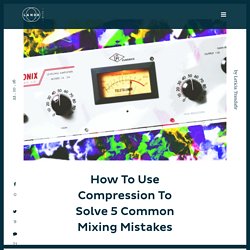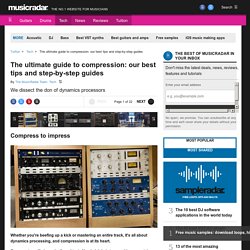

Longform candid interviews with music producers and audio engineers covering mixing, mastering, recording and music production. I'd come to a midtown Manhattan law office to meet Geoff Emerick, the infamous engineer on most of the significant recordings by The Beatles, to talk about his new memoir Here, There and Everywhere: My Life Recording The Beatles, along with his co-author Howard Massey, an accomplished writer and engineer himself.

What's most striking upon meeting Geoff is how mild-mannered he is — he's certainly quite humble considering his starring role in some of the most important recordings of the 20th century. Convert Audio Files To/From All Audio Formats with Switch. Longform candid interviews with music producers and audio engineers covering mixing, mastering, recording and music production. I was told this interview would never happen.

Apparently T Bone is a busy man, producing records, overseeing film soundtracks, recording solo albums and touring the world. Cockos Incorporated Forums. How to Use Compression to Solve 5 Common Mixing Mistakes. Compress to impress.

Compressors are great problem-solvers when you mix music. But if they’re used wrong, compression can significantly color (and even mess up) your sound. So you need to know what you’re doing to make it work for you (and actually solve your issue). In this article you’ll learn 5 common mixing problems and how to solve them using compression. So get to know them and start experimenting with your own sound… You’ll be a compression expert in no time. What is a compressor? First let’s dig into the basics! Compressors are funny creatures. Dynamic range is the difference between the loudest and the quietest parts of a signal.
You might be thinking: but isn’t reducing the dynamic range a bad thing? Well, compressors lower the volume of loud peaks–they even out the notes that stick out in the mix. Compressors lower the volume of loud peaks–they even out the notes that stick out in the mix. 10 Free Online Music Tools That Will Kickstart Your Creativity. Music production is more accessible than ever.

So access it! 7 Tips to Create Headroom and How It Will Save Your Mixes. Headroom is like air—your mix needs it to be able to breathe.

The most common problem we see at LANDR is a lack of headroom. Ask any mastering engineer and they’ll say the same thing: if a track comes in too hot, there’s no room left to master. There’s even an acronym for it: GIGO. That stands for ‘Garbage In, Garbage Out.’ Gain Staging: the bank account of your mix. Gain Staging: the bank account of your mix. Creepy Chord Combos (Chromatic Mediant Relationships) - orchestralmetal.com.
Creating Pro-Sounding Vocals - ADSR. The Abbey Road Reverb Trick. 5 Tips To Avoid Ruining Your Mix With Muddy Sound. 9 Psychoacoustic Sound Design Tricks To Improve Your Music. When talking about improving the perceived quality of our productions and mixes, its easy to focus mainly on the technology we use, or the layout and acoustic treatment of our listening environment.

It’s easy to forget that just as important as our software, equipment and studio is what happens to the signal after all of that, once the sound has made it into our internal hearing system – our ears and brains – and how that sound is actually experienced. So that’s what this article is about: some tips and tricks for operating and manipulating your listeners built-in ‘equipment’! “If real is what you can feel, smell, taste and see, then ‘real’ is simply electrical signals interpreted by your brain…” This basically falls under the heading of psychoacoustics, and with knowledge of a few psychoacoustic principles, there are ways that you can essentially ‘hack’ the hearing system of your listeners to bring them a more powerful, clear and ‘larger than life’ exciting experience of your music. 1. The ultimate guide to compression: our best tips and step-by-step guides. Compress to impress Whether you're beefing up a kick or mastering an entire track, it's all about dynamics processing, and compression is at its heart.

Compression will always be the subject of heated debate in regard to appropriate usage (don't mention the Loudness War...), but whether you like to use liberal amounts of it all over your mixes, prefer to apply it in small doses, or just want to learn more about the subject, we can help. Click through the gallery to find links to some of MusicRadar's most popular compression-related articles. The Ultimate EQ Cheat Sheet for Every Common Instrument. Image via Shutterstock You asked, and you shall receive, Sonicbids blog readers.

Per multiple requests, here's my guide to, "When the hell do I start turning these knobs, and where do they go? " But before we begin, I offer you the fine print: These references are general ideas for where to begin to look for sonic issues with particular sounds, instruments, and voices. I'm not going to tell you "always notch this 9 dB here and add 3 dB here with a wide boost and, voila, perfect sound! " because it's unfortunately just not that simple. Sometimes a guitar cab gets mic'd up differently night to night, plus every voice is unique, and every snare drum "speaks" differently (just ask a drummer). A subtractive approach to EQ Not everyone's ethos on EQ is the same, and most people may never see eye to eye on EQ approach. Also, a quick note on the topic of high pass filters: use them.